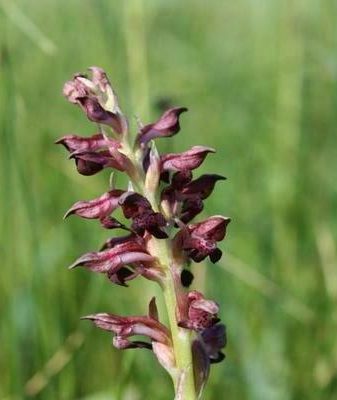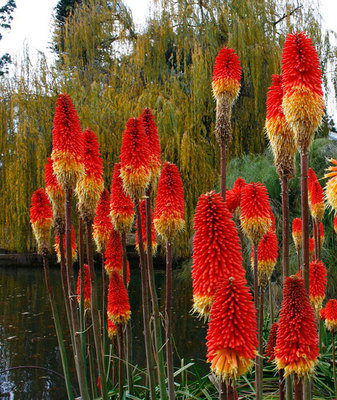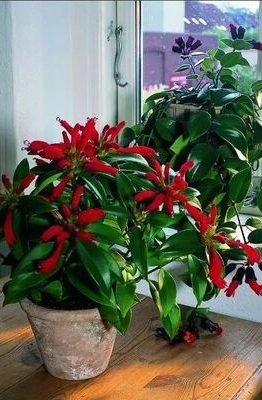Albicia
Content:
The plant species Albizia belongs to the Mimosaceae family, is a deciduous shrub and tree. This plant grows wild in the tropics, and grows in subtropical countries. It is widespread in the African and Australian continents.
Albizia is named after the man who brought the very first plant to Ferenza from Constantinople. This man is the naturalist Philippe Albizzi, who lived in the 18th century. By the way, culture is also called "Constantinople acacia".
In height, the Albizia shrub can reach 6-8 m. The leaves are pinnate, the inflorescences are capitate or spike-shaped, painted in a pink tint, outwardly resembling acacia.
How Albizia is grown at home
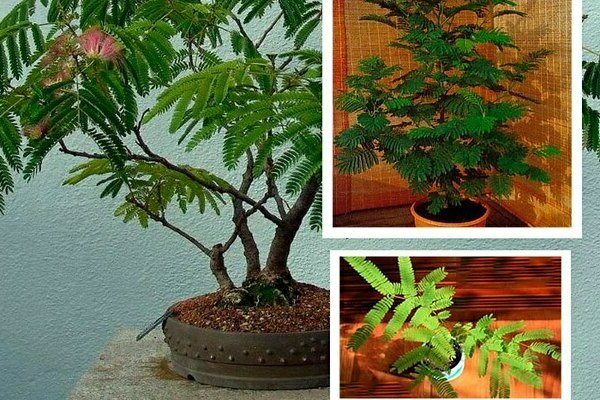
Albicia: photo of indoor flower
There are several conditions that must be met in order for Albizia to thrive at home.
Illumination level
Shrub of Albizia light-requiring. He needs good illumination, while the plant needs shading from the direct sun. During the winter season, Albizia should grow in an area that is very well lit. And in the summer season, you should opt for the area where the direct sun does not reach the leaves.
Temperature conditions
In the spring and summer seasons of the year albicia requires moderate temperature conditions - about 20-25 degrees. If possible, it is worth moving the plant to the open air when it is warm. But do not forget that direct hot sunlight should not fall on the selected place.
In the winter season, the culture is rearranged to cool (8-10 degrees), the place should be with good illumination. At this time, it is necessary to monitor the room temperature regime - it must be at least five degrees.
Albizia is not a hardy plant. Before the onset of the winter season, all leaves fall off.
Humidity level
The Albizia plant can grow and develop well if the level of humidity is low. No need to wet the leaves by spraying.
Watering
In the spring and summer season, abundant watering is applied. The shrub is watered after the surface soil layer has dried. In the winter season, moderate watering is carried out, and very carefully (especially if the winter season turned out to be cold), in order to avoid overflows or, conversely, dry out the soil. Watering is carried out only with soft, well-settled water at room temperature conditions.
Fertilization
Albizia is fed in spring and summer once every 14 or 21 days. For this purpose, a complex of fertilizers for decorative leafy vegetation is used.
How to transplant Albizia home correctly
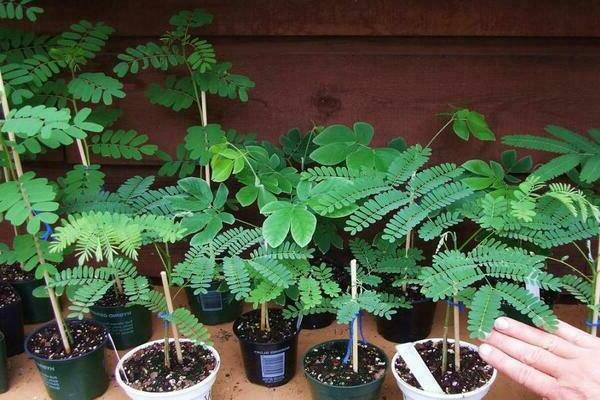
Albizia is transplanted in the spring season. Young plants are transplanted once a year, mature shrubs must be transplanted once every two or three years. To prepare a soil mixture, it is necessary to combine peat, light turf soil and sand in a ratio of 2: 3: 1, respectively. Remember that a good drainage system is required on the bottom of the container.
This shrub grows rapidly, for this reason, the container for planting requires a large enough size and high.
Albitsia: reproduction
Reproduction of Albizia can be carried out by cuttings and by seed.
- Before sowing, the seeds are placed in warm water for 2 days. After swelling of the grains, sowing is carried out in a soil mixture, which includes peat and sand. The seeds are slightly buried in the ground. It is required to maintain the temperature regime within 20 degrees. The soil should be slightly damp at all times.In addition, increased air humidity is also subject to maintenance. The appearance of the first shoots usually occurs several months after sowing the seeds.
- In the first summer days from the lateral stems (a branch of the current year with a "heel"), semi-lignified cuttings are trimmed. In length, they can be 10-15 cm. For planting, soil is used, which contains sand and peat in equal amounts. Seedlings are placed in a place where it is cool - about 16 degrees and which is protected from external environmental factors. When the cuttings are rooted, they are planted in individual containers filled with the same potting mix.
Diseases and harmful insects
If the air humidity is too low, then a spider mite may come to visit. Due to the fact that agronomic rules are violated, Albizia can be affected by a disease, for example, spotting can appear.
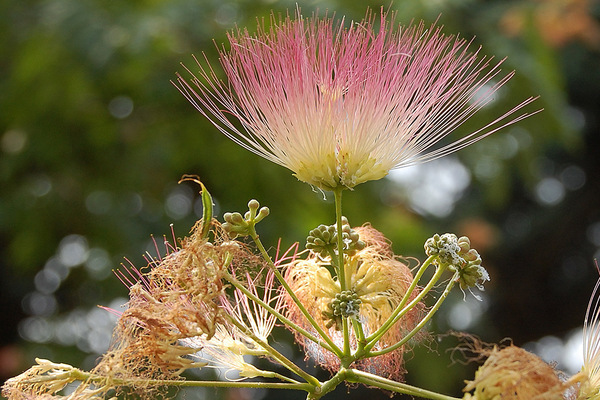
Albicia: photo of indoor flower
Sometimes Albizia gives signs that he is missing something or, on the contrary, there is a surplus of some substances. Let's take a look at them.
- The buds die off - this means that the soil is very dry.
- Leaves wither - the soil is overfilled or overdried, or the soil is too heavy.
- Leaves become faded - lack of lighting.
- Drying of the ends of the leaves. Coloring them brown is an insufficient introduction of water or a very low air humidity.
- Dark spots covered the upper part of the leaves - the presence of drafts or the effect of cold air masses.
What varieties does the albicia plant have?
Let's highlight two popular varieties of Albizia: Silk and Bundle-flowered
Albizia "Silk" (Albizia julibrissin)
This deciduous shrub grows up to 10-15 m, the diameter of the plant can be 30 cm, no less. The trunk is vertical, the crown is in the shape of an umbrella.
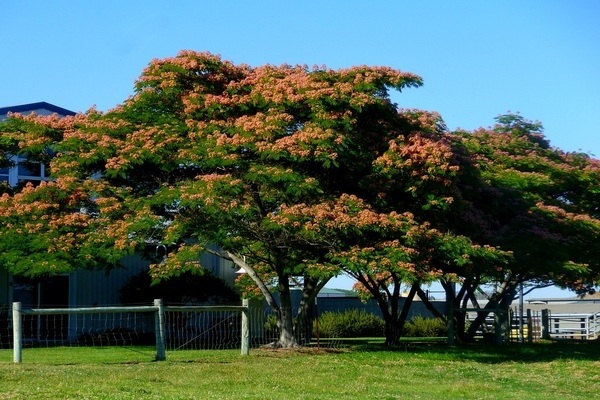
Albitsia: photo of a plant
The leaves of Silk Albizia are arranged in turn, double-pinnate, they can be 18-20 cm long. The leaves contain asymmetric, oblong sickle-shaped leaves, the upper part is dark green in color, and the inner part is light white in color.
The flowers do not have a corolla, but there are many rather elongated stamens. Inflorescences are spicate or capitate. The fruit is a polyspermous, flattened, straight pod that has been on the plant for a fairly long period of time.
This type of Silk Albizia has a spectacular appearance, it is very popular with people who are engaged in floriculture. In the winter season, the plant needs rest.
Albizia "Beam-flowered" (Albizia lophantha)
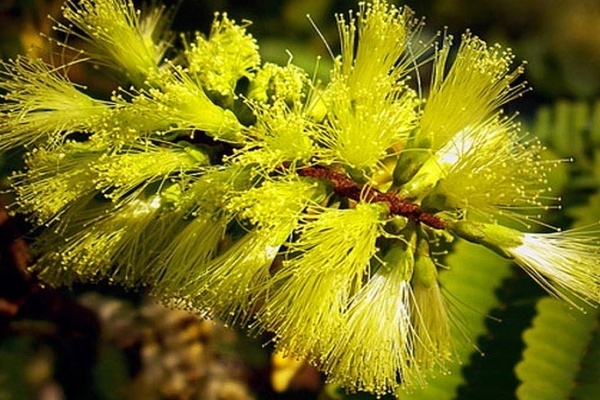
Albitsia: photo of a plant
The stems of the Tuchkoflower Albizia are pubescent from above. The leaves are double-pinned, the first order of leaves has 8-10 pairs of leaves, the second order has 20-40 pairs of leaves, the leaves are linear. Leaflets are bare, or their inner surface is pubescent. Inflorescences of a spike-shaped cylindrical shape grow up to 5 cm, have yellowish flowers in their composition. Bundle-flowered Albizia blooms from March days to May.


